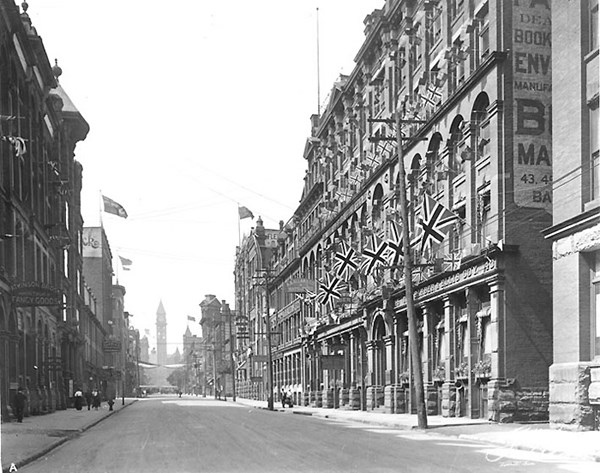Chicago is known for its great fire of 1871, but lesser known, is the great Toronto fire of 1904. Perhaps it is because Toronto’s conflagration did not have a fanciful legend of how it got started like Chicago’s Mrs. O’Leary’s cow.
In any event, on this date in 1904, much of downtown Toronto burned to the ground. Flames were first spotted coming out of the elevator shaft of E & S Currie neck wear factory at 58 Wellington Street West, just west of Bay Street (now TD Bank Tower) by a Toronto police constable walking his beat.
Nine hours later, more than 100 buildings had been destroyed, one man was dead and 5,000 of Toronto’s 200,000 population were out of work.
Damage is estimated to have been $10,387,000, roughly the equivalent of $275 million today.
Yorkton’s newspaper, The Enterprise, did not mention the fire in its April 19 edition, but it did have a tidbit about Canada’s most populous city.
“Toronto has one of the largest and fastest fleets of ice yachts on the continent,” the paper noted. “The club has a large membership, most of whom are active and own and run ice yachts. It is no uncommon sight to see thirty to fifty yachts on the bay flanking the city any pleasant day during the winter.
“The yachts carry from two to ten persons, depending on their size and the velocity of the wind.
“The speed attained in a stiff wind is often terrific exceeding frequently a mile a minute.”
Oddly, the sketch accompanying the piece was of a “Swiss native making a sled leaping record.
The big local news of the day was a report on the Doukhobor Annual Meeting.
The Enterprise detailed 21 decisions made by the community of 45 villages around the Yorkton area, including plans to buy equipment and build facilities to manufacture brick, tile and oil.
The paper also reprinted the entire 1903 financial statement of the “Christian Community of Universal Brotherhood in Canada.” It showed a deficit for the year of $45,975 on expenditures of 212,876 and receipts of $166,901.
This information was passed on to The Enterprise by none other than Peter Virigin through his interpretor. The famous Doukhobor leader had, in December 1902, just rejoined his people at the village of Poterpevshie (“the survivors”) approximately 15 km northwest of Kamsack after 16 years in exile in northern Russia.
Elsewhere in the paper, a local photography studio admonished parents to make sure they had up-to-date photos of their kids.
“It’s up to you!!” the ad for Hopkins Yorkton stated. “If the children have not been photographed lately! Is it not your duty to have it done now? They have no voice in the matter! Childhood is short! Lifelike portraits of the little tots are like good investments—they increase in value as time goes on! When you get old and the children get old, the pictures will be priceless!”




